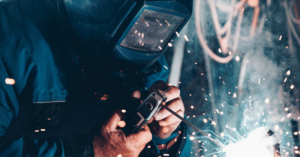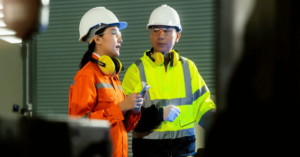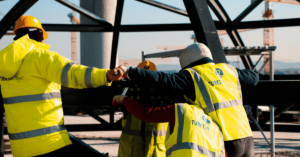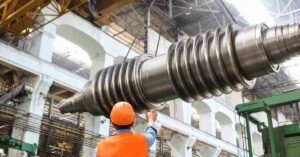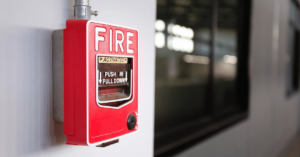In order to make sure your work environment is safe, and one which supports your team’s wellbeing, appropriate health and safety measures should be taken. But it’s not enough to implement them – they should be monitored, and their effectiveness regularly assessed.
The metrics that teams or departments should meet are health and safety key performance indicators (KPIs). These KPIs allow organisations to monitor and measure their performance in relation to health and safety goals and objectives. By tracking these, your organisation can identify areas for improvement, taking corrective action to prevent accidents and injuries – or anything which may be detrimental to workers’ health.
Here we’ll look at how managers can streamline, manage and improve health and safety in the workplace, for the benefit of your team or department.
Key points:
- Setting SMART goals for your health and safety initiatives ensures that they’re measurable and achievable. And monitoring these metrics better allows you to take corrective and preventative measures.
- As a minimum, you should measure reportable accidents and incidents required by law. But workplace safety can also be improved by keeping track of near misses, equipment breakdowns, and the rate of safety training completed by both staff and management.
- It’s important to track issues related to staff mental health too. For example, attendance and overtime are measures which can give you an idea of staff morale. And gathering feedback regarding satisfaction with their working environment can also help to build towards a more contented workplace.
How do I measure KPIs?
Before we look at specific KPIs, it’s important to mention that all of your health and safety goals should follow the SMART goal format. In other words, your goals should be specific, measurable, achievable, relevant and timebound.
This will help to ensure that you’re setting clear objectives and expectations, and that you’re able to analyse and compare results realistically.
What safety KPIs should I implement?
There are numerous KPIs that you can potentially implement, and some may be more relevant to your workplace than others. Nonetheless, these are some of the most common measures that you should be considering.
#1. Number of reported accidents/incidents
It should go without saying that all workplaces should record any accidents or incidents which occur, not least because it’s required by law. But this can also help to identify where corrective measures should be applied.
What qualifies as an accident or incident is set out in the Reporting of Injuries, Diseases and Dangerous Occurrences Regulations (RIDDOR) 2013 statute. For instance, recordable injuries should include any injury which requires medical treatment beyond first aid, such as a cut, sprain or fracture.
You can find out more about workplace health and safety laws here, including who’s responsible for upholding them.
There are a few metrics which can apply to accidents or incidents:
- Lost time injury frequency rate (LTIFR)
This is one of the most commonly used health and safety KPIs. It measures the amount of time lost due to workers being out of action, on account of workplace injury. This is usually measured by the period of lost time per million hours worked.
A high LTIFR indicates that there are more injuries occurring, which can result in lost productivity and increased insurance costs. Plus a high accident rate can obviously have a negative impact on staff morale.
- Total recordable injury frequency rate (TRIFR)
TRIFR is the frequency of incidents which measures the number of recordable injuries per million hours worked. This is similar to LTIFR, but works as a tally of injuries, rather than a measure of time.
- First-aid treatment rate
You might also choose to record your first-aid treatment rate, which measures the number of incidents requiring first aid. This provides an indication of the severity of injuries that are occurring within the organisation.
A high first-aid treatment rate indicates there are a significant number of injuries occurring, suggesting there are potential hazards within the workplace that need to be addressed to prevent more serious injuries from occurring.
By applying these metrics, organisations can identify areas where safety measures may need to be improved to reduce the number of injuries.
#2. Number of near misses
- Near-miss reporting
These are incidents that could have resulted in injury or damage to property, but didn’t. You might also choose to include minor incidents in this, such as bumps or scrapes.
By reporting near misses, organisations can identify potential hazards, and take action to prevent accidents from occurring in the future. The number of near misses can be reported per month or year. But in either case, a high rate – while highlighting that many issues need addressing – has an upside. This is because it indicates that staff are aware of potential hazards and actively reporting them.
- Equipment breakdown
It’s important to keep tabs on the amount of times equipment breaks down, especially if you use heavy machinery, or equipment that requires safety training. By creating a goal to reduce this number, you can improve not only operator safety, but also production.
- Safety training completion rate
Safety training is an important part of any workplace health and safety scheme. It helps employees to understand the hazards associated with their job and how to prevent accidents from occurring. The safety training completion rate measures the percentage of employees who have completed all required safety training.
A high completion rate indicates that employees are being trained properly and are aware of the hazards associated with their job. It also shows you’re taking safety seriously, and investing in the safety of your staff.
It’s also worth measuring the completion of training by management, in addition to employees. There should always be members of the leadership team who are able to carry out training and risk assessments. Plus, it’s important to lead by example.
Check out 17 common health and safety issues in the workplace, and how to prevent them.
#3. Health KPIs
These are distinct from safety KPIs, as they focus more on staff wellbeing. Mental health is just as important as physical safety, so it’s also well worth implementing some or all of the following KPIs.
- Average staff attendance
The employee attendance rate can be used to measure how much the members of your team adhere to their scheduled hours, usually expressed as a percentage.
Tracking attendance means that you can identify any issues regarding absenteeism, and address them accordingly. For example, you might choose to offer working arrangements better suited to individuals, such as hybrid working, or more flexible hours. You might also make more support available in the workplace.
- Average overtime
Measuring the average overtime hours per person tells you how much members of your team are working in addition to their normal contracted hours. This gives you an idea of how often work is completed within the hours allocated to it. If the amount of overtime is high, it suggests that workload may not be properly managed, and could result in worker fatigue.
Of course, sometimes overtime is welcomed, and certain occasions may call for it – such as periods of unusually high demand. But if it’s happening regularly and often, it could indicate a problem. Whether or not to apply this KPI depends on your industry and specific needs. But bear in mind that typically the maximum that full-time staff can work by law is 48 hours, averaged over 17 weeks.
- Satisfaction with environment
You can measure your team’s satisfaction with environment score by conducting internal surveys, analysing how happy staff are with their working environment. These are conducted by the HR team, and any feedback gathered tends to be confidential.
This can focus on physical factors such as cleanliness, available space, quality of their desks, communal spaces, toilets and so on. Noise levels are also important, and it’s important to gauge to what degree people are able to concentrate on their work. There might also be an emotional focus, such as ascertaining to what degree people feel that help and support is available.
Low scores here could indicate that members of your team are unhappy with their environment, which could be having an adverse effect on their mental health.
💡Expert tip💡
To encourage buy-in from your staff, find out more about promoting a positive health and safety culture here.
Why you should implement some – if not all – of these KPIs
While the example KPIs listed here are by no means exhaustive, it’s well worth considering tracking all of them as a minimum, assuming they’re appropriate to your workplace. Keeping a close eye on the factors detailed here is essential for creating a safe and functional work environment.
By monitoring these KPIs, your organisations can identify potential hazards, take corrective action to prevent accidents and injuries, and create a culture of safety within the workplace.
If you or your staff need to upskill in this regard, check out our health and safety training courses here.


